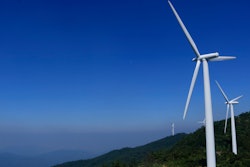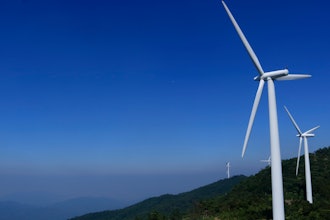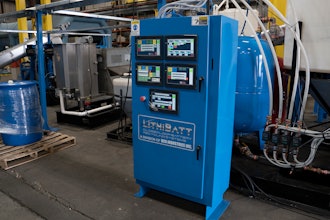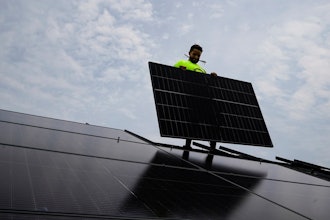Christmas comes in the summer in sub-Saharan Africa, and for months leading up to the 2014 holiday season, homes and businesses in Cabinda, Angola, were often hot and dark. The old power grid that had supplied power to this fast-growing and oil-rich province had faltered under the growing demand. “There was immense pressure on the administration in Angola to solve this problem,” recalls Leslie Nelson, executive general manager for GE Power in Africa.
Luckily, help was only a plane ride away. In early December 2014, local Angolan power developer AE Energia partnered with GE to fly a giant Antonov cargo jet, carrying a semi-truck-sized “power plant on wheels,” into Cabinda. By Christmas Day, this blocky mobile TM2500 turbine, which is actually a re-engineered jet engine, was providing 25 megawatts, the equivalent power needed to supply approximately 100,000 Angolan homes. “It was a very happy time for people in politics and everyone residing in the Cabinda area,” Nelson says.
Angola is just one country that’s benefited from GE’s Fast Power technology. When there was a sudden need for energy, such as during a natural disaster or period of intense growth, the technology quickly provided electricity to the hurricane-hit Baja California peninsula in Mexico, booming Egypt, Algeria and, most recently, Tunisia.
Fast Power is more than just turbines. It’s really a group of complementary power systems that can rapidly and reliably generate and distribute power to even the most remote areas.
GE says the machines can be up and running within 30 days (unlike a traditional heavy-duty power plant, which can take approximately 12 months to come online). Each mobile unit generates about 25-30 megawatts of electricity using either natural gas or diesel. It can also be configured to burn propane. The Fast Power turbine reaches full power in as little as 10 minutes — almost like an airplane.
That makes sense since the TM2500 turbines are so-called aeroderivatives, repurposed from jet engines manufactured in Cincinnati. The TM2500, for example, has at its core a turbine from the CF6 engine, the same kind that powers many Boeing 747s, including Air Force One. GE refers to such technology sharing among its businesses as the GE Store.
“The aeroderivatives make these mobile power plants lighter than other, similar systems on the market,” says Patrizio Prunecchi, commercial operations leader for GE’s gas power systems. Weight is important since countries like Angola do not have the transportation infrastructure that would allow a giant power plant to be easily built. “The mobile units are light and can be transported — on their own wheels — to remote parts of the country,” Prunecchi says.
There are now more than 200 GE TM2500 turbines strategically placed throughout the world — mostly in areas with developing economies and without an electric grid infrastructure. Often, they provide backup power during an emergency or a bridge to a longer-term solution.
In Egypt, 20 of these GE units gave the country a lasting boost during a power outage due to the summer heat. In Baja, Mexico, four TM2500s revived power in just two weeks after Hurricane Odile devastated the region in 2014. Ten of these units came to the rescue in Japan after the 2011 earthquake triggered a tsunami and caused widespread power outages. In arid, heat-blasted Algeriain 2013, GE fast-tracked power production with four TM2500s so that residents would be able to have air-conditioning during the summer surges. The plants arrive fully manufactured from a GE plant in either Houston or Hungary.
But mobile power plants aren’t the only way GE is supplying people with Fast Power. In Tunisia, GE is delivering the Tunisian Company of Electricity and Gas (STEG) with a full-scale turnkey power plant. Unlike a mobile unit, the Bouchemma power plant is permanent and can generate over 250 megawatts, the equivalent needed to supply more than 1.2 million Tunisian homes. Yet thanks to a combination of technology and a speedier manufacturing, transportation and installation process, the Fast Power team expects to get it up and running in just seven months.
Two 9E.03 gas turbines, generators, a control system and an electrical Balance of Plant (eBoP) system will help Tunisia’s coastal region avoid power outages during the summer season and to keep a local factory humming. The eBoP grid solution was derived from technology developed by GE’s power and grid business, which GE acquired from Alstom last year. It’s now also part of the GE Store.






















